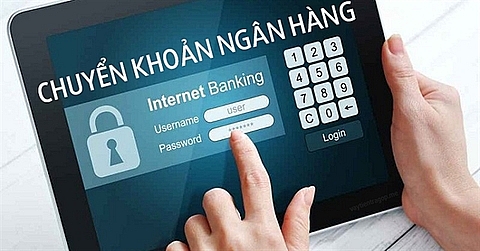Lists of compulsory non-cash transactions announced
 |
| E-payments jumped 65.81 per cent in number of transactions and 13.46 per cent in value in the first five months of 2019. - Photo doanhnhansaigon.vn |
According to a newly-issued regulation of the State Bank of Vietnam (SBV), several payments and transactions in merger and acquisition (M&A) activities, securities, tax and State budget must now be made via banks.
Accordingly, in the financial sector, enterprises that contribute capital to purchase and sell stakes in other enterprises, or transfer their contributed capital to other enterprises must use non-cash payment forms.
Non-credit institutions are also required to use non-cash payments for transactions related to loans and loan repayments.
Some transactions in the securities sector must be paid via banks. They are payments of securities transactions on the Ha Noi and Ho Chi Minh stock exchanges as well as those deposited at the Vietnam Securities Depository Centre; bond transaction payments; and trading securities for customers of securities companies.
In the tax sector, firms are required to use non-cash payments for their purchase or export of goods and services worth more than VND20 million (US$860) so as to enjoy tax refunds and corporate income tax reduction.
The regulation also states State budget revenue and expenditure transactions must be carried out through banks.
The list of compulsory transactions via banks in accordance with the law is made public on e- portals of the Government Office, the Ministry of Finance, the SBV and other related ministries and branches.
According to the State Bank of Viet Nam (SBV)’s Payment Department, the use of cash is falling as non-cash payments become more common. In the first five months of 2019, the total transaction value through the inter-bank e-payment system surged by 23.23 per cent against the same period last year, while the number of transactions increased by 17.63 per cent.
E-payments also jumped 65.81 per cent in number of transactions and 13.46 per cent in value.
Notably, mobile payments witnessed a year-on-year surge of 97.75 per cent in volume and 232 per cent in value.
Under a Government plan on cashless payments in the 2016-20 period approved by the Prime Minister, the ratio of transactions that use cash will be reduced from 90 per cent in 2016 to below 10 per cent by the end of 2020.
What the stars mean:
★ Poor ★ ★ Promising ★★★ Good ★★★★ Very good ★★★★★ Exceptional
Related Contents
Latest News
More News
- Securing capital and efficiency for Vietnam’s 2026-2030 growth ambitions (December 17, 2025 | 10:00)
- Energy sector in need of blended finance mechanisms (December 17, 2025 | 09:00)
- Vietnam still has room to mobilise capital for sustainable growth (December 17, 2025 | 08:57)
- Long-term capital seen as key hurdle to green growth (December 16, 2025 | 08:00)
- Gold prices swing amid tax debate and import uncertainty (December 15, 2025 | 18:04)
- Agribank frames bank credit as catalyst for green growth (December 15, 2025 | 17:59)
- Vietnam’s green transition demands collective financial action (December 15, 2025 | 12:00)
- VIR workshop highlights capital and policy for sustainable development (December 15, 2025 | 11:00)
- Promoting digital assets initiative in Vietnam (December 13, 2025 | 09:30)
- Experts flag gaps as national financial strategy under review (December 12, 2025 | 15:13)

 Tag:
Tag:






















 Mobile Version
Mobile Version